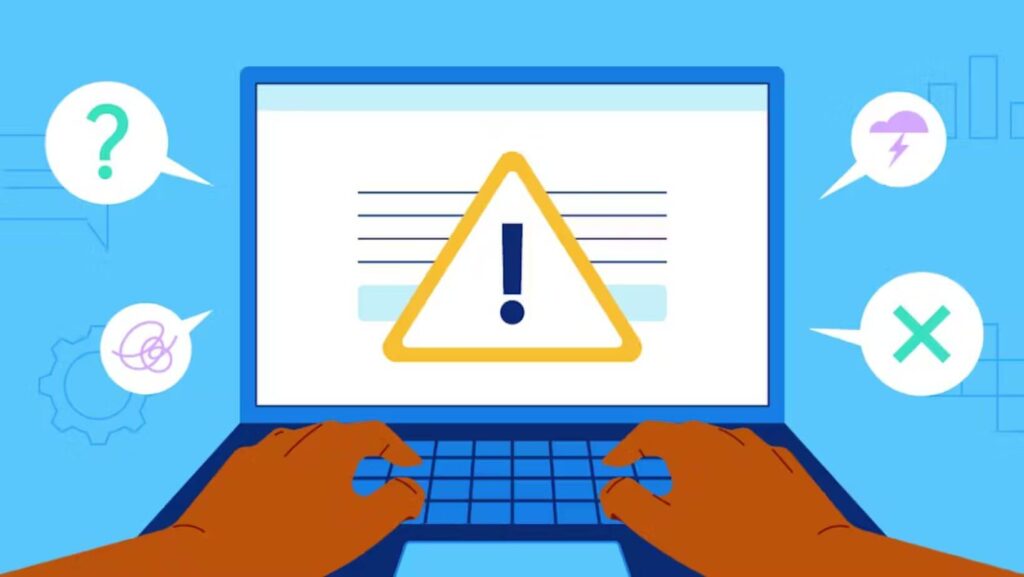If you’ve ever encountered the frustrating error message –errordomain=nscocoaerrordomain&errormessage=opgegeven opdracht niet gevonden.&errorcode=4 While using a macOS or iOS application, you might be wondering what this error means and how to fix it.
This specific error, part of the NSCocoaErrorDomain, typically occurs when an operation or command cannot be found or executed within the app.
Whether you’re a developer or a user trying to troubleshoot, understanding the cause of this error can help you resolve it efficiently.
In this article, we’ll explore what this error signifies, the common reasons it appears, and how to address it in order to restore functionality.
What Is NSCocoaErrorDomain?
NSCocoaErrorDomain is a domain used for error handling in Cocoa, the framework that underpins macOS and iOS development.
When you encounter this error, it points to an issue related to the Cocoa framework, which is critical for apps built on macOS or iOS.
If you’re working in Objective-C or Swift, this domain is commonly seen when there are bugs in the system or app-specific issues.
Breaking Down the Error Message: “Opgegeven Opdracht Niet Gevonden” In errordomain=nscocoaerrordomain&errormessage=opgegeven opdracht niet gevonden.&errorcode=4
To troubleshoot and fix this error, it’s important to understand the specific parts of the message:
errordomain=nscocoaerrordomain:
This component signals that the error comes from the Cocoa framework. This framework is integral to the operating systems of macOS and iOS devices.
errormessage=opgegeven opdracht niet gevonden:
This Dutch phrase translates to “The specified command was not found.” In simpler terms, it means the system attempted to execute a command it couldn’t recognize or locate.
errorcode=4:
This error code typically identifies a specific issue within the system. Error code 4 often points to file-related problems, such as the system being unable to access or locate a necessary file or object.
What Causes errordomain=nscocoaerrordomain&errormessage=opgegeven opdracht niet gevonden.&errorcode=4 Errors?

NSCocoaErrorDomain errors can arise for several reasons, such as file mishandling, network problems, code bugs, or system configuration issues. Understanding the message and error code can help you troubleshoot effectively.
What Does “Opgegeven Opdracht Niet Gevonden” Mean?
This error means “Command Not Found,” and usually indicates that the system is trying to execute a command that doesn’t exist or can’t be found. This is often tied to problems like incorrect file paths or missing resources.
Interpreting Error Code 4
Error code 4, in the context of “Opgegeven Opdracht Niet Gevonden,” is often related to issues with finding or accessing files. This can happen due to wrong file paths, missing files, or lack of proper permissions.
Steps to Troubleshoot errordomain=nscocoaerrordomain&errormessage=opgegeven opdracht niet gevonden.&errorcode=4 (Error Code 4)
To resolve this errordomain=nscocoaerrordomain&errormessage=opgegeven opdracht niet gevonden.&errorcode=4 error, follow these troubleshooting steps:
✔️ Check File Paths: Ensure the paths for all referenced files in your code are correct and accessible.
✔️ Verify Resource Existence: Confirm that the resources (files, directories) exist in the locations your application expects.
✔️ Review File Permissions: Ensure the necessary files and directories have the correct permissions to allow read and write access.
✔️ Use Debugging Tools: Utilize debugging tools to pinpoint the exact location of the error in your code.
✔️ Error Handling: Add robust error handling to gracefully manage issues when they occur, providing meaningful feedback to the user.
Systematic Troubleshooting Approach To errordomain=nscocoaerrordomain&errormessage=opgegeven opdracht niet gevonden.&errorcode=4
✔️ Restart Your Device: A restart can often resolve temporary glitches.
✔️ Force Quit the Application: If the error is app-specific, force quitting and reopening may clear up temporary issues.
✔️ Update Apps: Make sure you’re using the latest version of your app, as updates often fix bugs.
✔️ Update Your OS: Ensure your macOS or iOS is up-to-date to avoid compatibility issues.
✔️ Repair Disk Permissions: Sometimes, disk permission problems can interfere with file access.
✔️ Reinstall the Application: If the error persists, reinstall the app to replace corrupted files.
✔️ Safe Mode Boot: Boot into Safe Mode to identify potential conflicts with third-party software.
Advanced Troubleshooting To errordomain=nscocoaerrordomain&errormessage=opgegeven opdracht niet gevonden.&errorcode=4
✔️ Check for Conflicting Software: Review recently installed apps and disable startup items or extensions that may be causing conflicts.
✔️ Scan for Malware: Rarely, malware can cause issues with system processes. Run a virus scan to rule out this possibility.
✔️ Disk Utility – First Aid: Use macOS’s Disk Utility to check for and repair disk problems.
✔️ Reset to Factory Settings: As a last resort, reset your device to its factory settings after backing up all important data.
Preventing Future NSCocoaErrorDomain Errors
While troubleshooting is essential, taking preventative measures can help avoid these errordomain=nscocoaerrordomain&errormessage=opgegeven opdracht niet gevonden.&errorcode=4 error in the future:
- Input Validation: Always validate inputs and external data to prevent errors.
- Robust Error Handling: Implement solid error handling throughout your app.
- Regular Testing: Conduct thorough testing, especially on edge cases, to catch errors before they affect users.
- Frequent Updates: Continuously improve and refactor your code to keep it reliable and maintainable.
Conclusion
Understanding the NSCocoaErrorDomain error or errordomain=nscocoaerrordomain&errormessage=opgegeven opdracht niet gevonden.&errorcode=4 error, particularly the “Opgegeven Opdracht Niet Gevonden” message and error code 4, is essential for diagnosing and fixing issues in macOS and iOS apps.
By systematically troubleshooting and taking proactive measures, you can resolve errors quickly and ensure the reliability of your application.
Consider keeping your software updated, regularly back up data, and employ good coding practices to minimize the chances of encountering such issues again.







![GenYouTube - Quick Youtube Video Downloader [ genyoutube download photo ] https://www.linkauthorityhub.com/ Link Authority Hub](https://www.linkauthorityhub.com/wp-content/uploads/2025/02/Freelancing-Promotion-Facebook-Cover-Photo-1-1-150x150.jpg)
